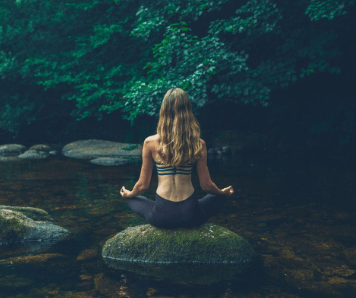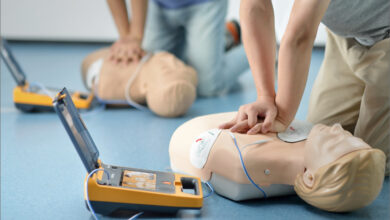The Ultimate Guide to Calming Techniques: Find Your Inner Peace

In today’s fast-paced world, stress and anxiety have become common experiences for many people. Whether it’s work pressures, personal challenges, or the constant bombardment of information, finding ways to stay calm is essential for both mental and physical well-being. This comprehensive guide explores various calming techniques, their benefits, and how you can incorporate them into your daily routine.
What Is Calming?
Calming refers to practices and techniques that help reduce stress, anxiety, and emotional turmoil. It involves activities that promote relaxation, mental clarity, and emotional balance. Calming isn’t just about feeling relaxed momentarily; it’s about cultivating a state of peace that can improve your overall quality of life.
The Importance of Calming Techniques
Calming techniques offer numerous benefits:
- Reduces Stress Levels: Helps lower cortisol levels, reducing the negative impact of chronic stress.
- Improves Mental Health: Alleviates symptoms of anxiety and depression.
- Enhances Focus and Productivity: A calm mind can concentrate better and make decisions more effectively.
- Promotes Physical Health: Reduces blood pressure, improves heart health, and boosts the immune system.
Effective Calming Techniques
1. Deep Breathing Exercises
Deep breathing is one of the simplest and most effective ways to induce a state of calm. Techniques like diaphragmatic breathing, box breathing, and the 4-7-8 method can be practiced anywhere, anytime.
How to Practice:
- Sit comfortably with your back straight.
- Inhale deeply through your nose for 4 seconds.
- Hold your breath for 7 seconds.
- Exhale slowly through your mouth for 8 seconds.
- Repeat for a few minutes.
2. Meditation and Mindfulness
Meditation helps clear the mind and focus on the present moment. Mindfulness, a form of meditation, involves paying attention to your thoughts, feelings, and surroundings without judgment.
Types of Meditation:
- Guided Meditation
- Transcendental Meditation
- Mindfulness-Based Stress Reduction (MBSR)
3. Progressive Muscle Relaxation (PMR)
PMR involves tensing and then slowly relaxing each muscle group in the body. This technique helps you become more aware of physical tension and teaches you how to release it.
Steps:
- Start from your toes and work your way up.
- Tense each muscle group for 5-10 seconds.
- Relax and notice the difference in sensation.
4. Visualization Techniques
Visualization, or guided imagery, uses mental images to promote relaxation. Imagine a peaceful scene, like a beach or a forest, and immerse yourself in the sensory details.
Benefits:
- Reduces anxiety
- Enhances mood
- Improves focus
5. Aromatherapy
Aromatherapy uses essential oils to promote emotional and physical well-being. Scents like lavender, chamomile, and eucalyptus are known for their calming properties.
How to Use:
- Diffusers
- Bath additives
- Topical application (diluted with a carrier oil)
6. Gentle Physical Activities
Physical movement can help release stress and promote relaxation. Activities like yoga, tai chi, and qigong combine gentle movements with deep breathing and meditation.
Benefits:
- Improves flexibility and balance
- Reduces stress hormones
- Enhances mind-body connection
7. Journaling
Writing down your thoughts and feelings can help process emotions and reduce stress. Journaling provides an outlet for self-expression and can offer new perspectives on challenging situations.
Tips:
- Write freely without worrying about grammar or structure.
- Focus on gratitude, positive experiences, or emotional reflections.
8. Listening to Calming Music
Music has a profound effect on emotions and can be a powerful tool for relaxation. Genres like classical, ambient, or nature sounds are particularly effective.
How It Helps:
- Slows heart rate
- Lowers blood pressure
- Reduces stress hormones
9. Spending Time in Nature
Nature has a natural calming effect. Activities like walking in a park, hiking, or simply sitting by a body of water can significantly reduce stress levels.
Benefits:
- Improves mood
- Enhances mental clarity
- Reduces feelings of anxiety
10. Breathing Spaces and Safe Zones
Creating a personal space dedicated to relaxation can provide a refuge from daily stress. This could be a cozy corner in your home with calming colors, soft lighting, and comforting items.
Incorporating Calming Techniques into Daily Life
Consistency is key to reaping the benefits of calming practices. Here are some tips to integrate these techniques into your routine:
- Morning Rituals: Start your day with a few minutes of deep breathing or meditation.
- Scheduled Breaks: Set reminders to take short breaks for relaxation during work.
- Evening Wind-Down: Establish a bedtime routine that includes calming activities like reading, light stretching, or aromatherapy.
Calming Techniques for Different Situations
For Work Stress:
- Practice deep breathing at your desk.
- Take short walks during breaks.
- Listen to calming music with headphones.
For Anxiety and Panic Attacks:
- Use grounding techniques (focus on 5 things you can see, 4 you can feel, etc.).
- Practice the 4-7-8 breathing technique.
- Hold a comforting object or engage in sensory activities.
For Better Sleep:
- Avoid screens an hour before bed.
- Listen to soothing sounds or guided meditations.
- Practice progressive muscle relaxation.
The Science Behind Calming Techniques
Research supports the effectiveness of these practices in reducing stress and promoting well-being. For example:
- Mindfulness Meditation: Studies show it can reduce symptoms of anxiety, depression, and chronic pain.
- Deep Breathing: Helps regulate the autonomic nervous system, promoting a state of rest and digestion.
- Physical Activity: Releases endorphins, natural mood lifters that reduce stress.
Common Challenges and How to Overcome Them
- Lack of Time: Incorporate short practices throughout the day, like 2-minute breathing exercises.
- Difficulty Concentrating: Start with guided sessions and gradually practice independently.
- Inconsistent Practice: Set reminders and create a routine to build consistency.
Conclusion
Calming techniques are essential tools for managing stress and enhancing overall well-being. By exploring different methods and finding what works best for you, you can cultivate a sense of peace and resilience in your daily life. Start small, stay consistent, and remember that even a few minutes of calm can make a significant difference.




